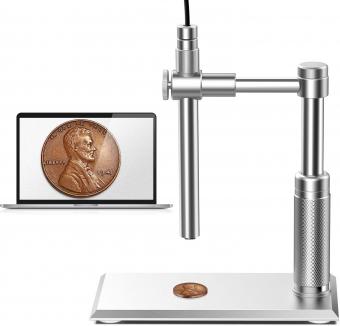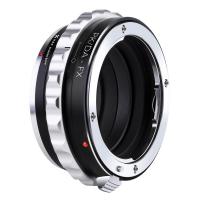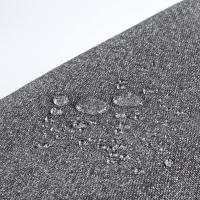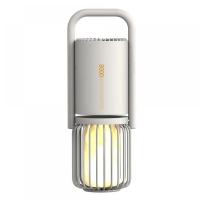How Does Sperm Look Under A Microscope ?
Under a microscope, sperm appears as tiny, tadpole-like structures. They have a distinct head, which contains the genetic material, and a long tail, which enables them to swim. The head of the sperm is typically oval-shaped and contains the nucleus, which carries the genetic information necessary for fertilization. The tail, also known as the flagellum, is long and whip-like, allowing the sperm to move and propel itself forward. Sperm cells are usually very small, measuring about 50 micrometers in length. However, the exact appearance of sperm can vary slightly depending on the species.
1、 Morphology: Structure and shape of sperm cells under a microscope.
Under a microscope, sperm cells can be observed in great detail, providing valuable information about their morphology, structure, and shape. Sperm cells are typically very small, measuring around 50 micrometers in length. They have a distinct head, midpiece, and tail, each serving a specific function in the process of fertilization.
The head of a sperm cell is oval-shaped and contains the genetic material necessary for fertilization. It is covered by a cap-like structure called the acrosome, which contains enzymes that aid in penetrating the egg during fertilization. The midpiece, located behind the head, is packed with mitochondria that provide energy for the sperm's movement. Finally, the tail, also known as the flagellum, propels the sperm forward through a whip-like motion.
Recent advancements in microscopy techniques have allowed for even more detailed observations of sperm morphology. High-resolution microscopy, such as electron microscopy, has revealed intricate details of the sperm's structure, including the arrangement of proteins and organelles within the cell. This has led to a better understanding of the molecular mechanisms involved in sperm function and fertilization.
Furthermore, advances in staining techniques have enabled researchers to visualize specific components of sperm cells. Fluorescent dyes can be used to label DNA, proteins, or other cellular structures, providing a clearer picture of the sperm's internal organization.
Studying sperm morphology under a microscope is crucial in assessing male fertility. Abnormalities in sperm shape and structure, known as sperm morphology defects, can impact fertility and increase the risk of infertility. By examining sperm cells under a microscope, fertility specialists can identify these defects and provide appropriate guidance and treatment options for couples struggling with infertility.
In conclusion, observing sperm cells under a microscope allows for a detailed examination of their morphology, structure, and shape. Recent advancements in microscopy techniques have provided a deeper understanding of sperm function and fertility. By studying sperm morphology, researchers and clinicians can gain valuable insights into male reproductive health and offer effective solutions for couples trying to conceive.

2、 Motility: Movement patterns and behavior of sperm cells.
How does sperm look under a microscope? When observed under a microscope, sperm cells appear as tiny, tadpole-like structures with a head and a tail. The head of the sperm contains the genetic material, including the DNA, while the tail is responsible for propelling the sperm forward. The head is oval-shaped and usually measures around 5-6 micrometers in length, while the tail can be several times longer, allowing the sperm to swim towards the egg.
However, it is important to note that the appearance of sperm under a microscope can vary depending on various factors, such as the staining technique used and the quality of the sample. Additionally, advancements in microscopy techniques have allowed for more detailed observations of sperm morphology, including the ability to assess the shape, size, and structural abnormalities of sperm cells.
Motility, or the movement patterns and behavior of sperm cells, is another crucial aspect that can be observed under a microscope. Sperm cells are highly specialized for swimming, and their motility is essential for successful fertilization. Under the microscope, motile sperm can be seen moving in a characteristic wiggling or swimming motion, using their tail to propel themselves forward.
Recent research has focused on assessing sperm motility in more detail, including the speed, directionality, and quality of movement. Advanced imaging techniques, such as high-speed video microscopy, have allowed for a better understanding of sperm motility and its relationship to fertility. These techniques have revealed that not all motile sperm exhibit the same movement patterns, and abnormalities in motility can be associated with male infertility.
In conclusion, when observed under a microscope, sperm cells appear as small, tadpole-like structures with a head and a tail. The motility of sperm, which is crucial for successful fertilization, can also be assessed under the microscope. Advancements in microscopy techniques have allowed for a more detailed understanding of sperm morphology and motility, shedding light on the factors that can impact male fertility.

3、 Count: Quantifying the number of sperm cells observed.
How does sperm look under a microscope? When observed under a microscope, sperm cells appear as tiny, tadpole-like structures with a distinct head and a long tail. The head of the sperm contains the genetic material, including the DNA, while the tail enables the sperm to swim and propel itself towards the egg for fertilization.
The head of the sperm is oval-shaped and usually measures around 5-6 micrometers in length. It is covered by a cap-like structure called the acrosome, which contains enzymes that help the sperm penetrate the outer layer of the egg during fertilization. The head also contains a nucleus, which holds the genetic information necessary for fertilization.
The tail, or flagellum, is a long, whip-like structure that propels the sperm forward. It is composed of a central filament called the axoneme, surrounded by a sheath of proteins. The tail allows the sperm to move in a corkscrew-like motion, aiding its journey through the female reproductive tract towards the egg.
It is important to note that the appearance of sperm under a microscope can vary slightly between individuals. Factors such as age, health, and lifestyle choices can influence the size, shape, and motility of sperm. Additionally, advancements in microscopy techniques have allowed for more detailed observations of sperm, including the ability to assess sperm count, morphology, and motility.
Count: Quantifying the number of sperm cells observed. Sperm count is a crucial parameter in assessing male fertility. A normal sperm count typically ranges from 15 million to more than 200 million sperm cells per milliliter of semen. However, it is important to note that a high sperm count does not guarantee fertility, as other factors such as sperm motility and morphology also play a significant role.
In recent years, there has been growing concern about declining sperm counts in men worldwide. Several studies have reported a decrease in sperm count and quality, potentially impacting male fertility. However, it is essential to consider that these studies have limitations, and more research is needed to fully understand the causes and implications of this trend.
In conclusion, when observed under a microscope, sperm cells appear as small, tadpole-like structures with a distinct head and tail. The appearance of sperm can vary between individuals, and advancements in microscopy techniques have allowed for more detailed assessments of sperm count, morphology, and motility. Understanding the characteristics of sperm is crucial in evaluating male fertility and addressing concerns about declining sperm counts.

4、 Viability: Assessing the health and vitality of sperm cells.
How does sperm look under a microscope? When examining sperm under a microscope, several characteristics can be observed to assess their health and vitality. These characteristics include sperm count, motility, morphology, and viability.
Sperm count refers to the number of sperm cells present in a given sample. A healthy sperm count is typically considered to be above 15 million sperm per milliliter. Motility refers to the ability of sperm to move and swim effectively. Progressive motility, where sperm swim in a straight line or large circles, is considered ideal for successful fertilization. Morphology refers to the shape and structure of sperm cells. Normal sperm have an oval head and a long tail, allowing them to swim efficiently.
Viability is a crucial aspect of assessing sperm health. It refers to the ability of sperm cells to survive and fertilize an egg. A viability test determines the percentage of live sperm in a sample. This test is often performed using a dye that stains dead sperm cells, allowing the examiner to differentiate between live and dead sperm.
The latest point of view on assessing sperm viability involves advanced techniques such as DNA fragmentation analysis. This technique evaluates the integrity of sperm DNA, as damaged DNA can affect fertility and increase the risk of genetic abnormalities in offspring. DNA fragmentation analysis provides valuable information about sperm quality and can help identify potential causes of infertility.
In conclusion, when examining sperm under a microscope, various characteristics such as count, motility, morphology, and viability are assessed to determine their health and vitality. Advancements in techniques like DNA fragmentation analysis have further enhanced our understanding of sperm quality and its impact on fertility.































There are no comments for this blog.